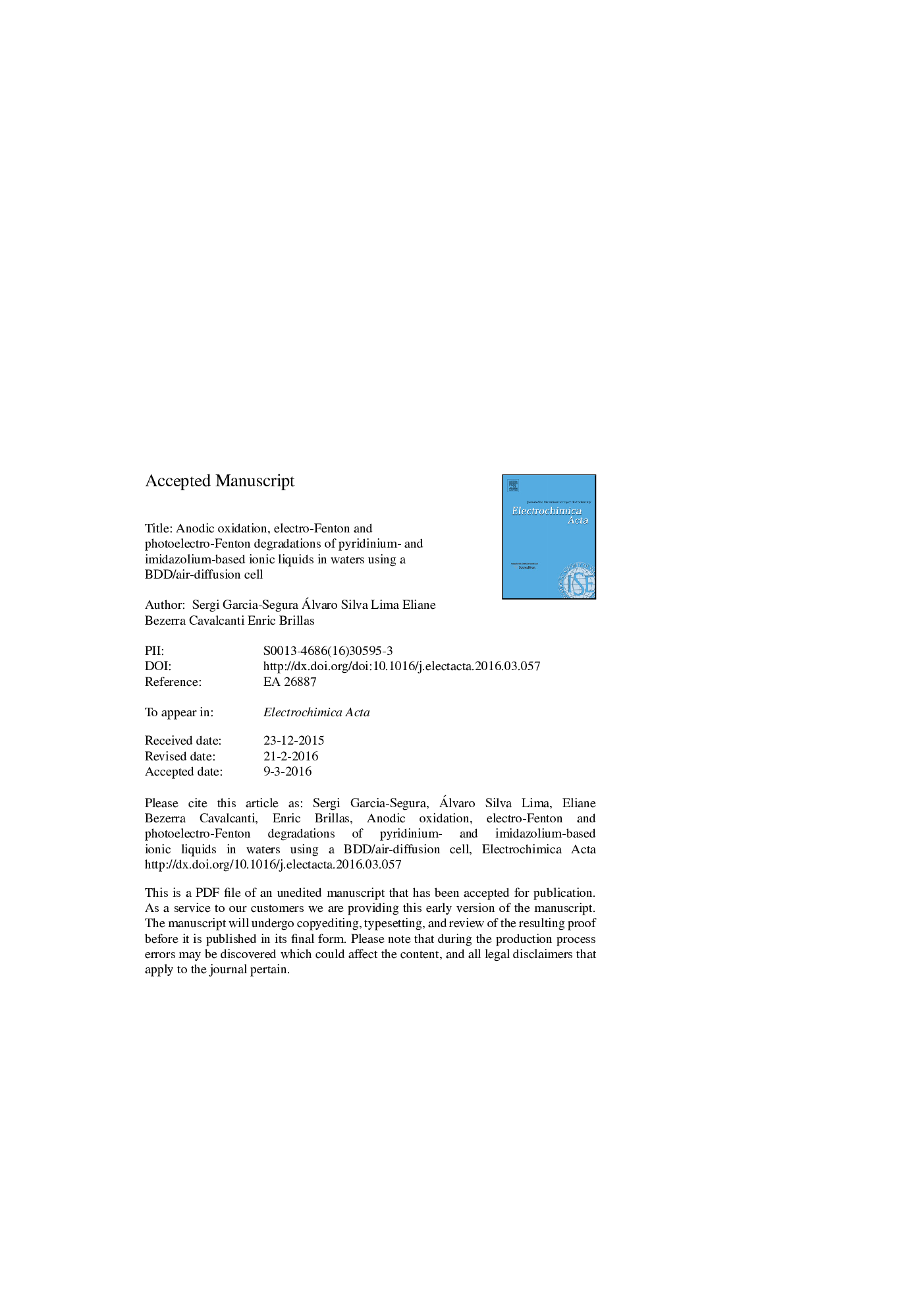| کد مقاله | کد نشریه | سال انتشار | مقاله انگلیسی | نسخه تمام متن |
|---|---|---|---|---|
| 6607949 | 459539 | 2016 | 38 صفحه PDF | دانلود رایگان |
عنوان انگلیسی مقاله ISI
Anodic oxidation, electro-Fenton and photoelectro-Fenton degradations of pyridinium- and imidazolium-based ionic liquids in waters using a BDD/air-diffusion cell
دانلود مقاله + سفارش ترجمه
دانلود مقاله ISI انگلیسی
رایگان برای ایرانیان
کلمات کلیدی
موضوعات مرتبط
مهندسی و علوم پایه
مهندسی شیمی
مهندسی شیمی (عمومی)
پیش نمایش صفحه اول مقاله

چکیده انگلیسی
The degradation of two representative ionic liquids, 1-butyl-4-methylpyridinium chloride and 1-ethyl-3-methylimidazolium chloride, has been studied in 100Â cm3 of aqueous sulfate medium of pH 3.0 by electrochemical advanced oxidation processes (EAOPs) like anodic oxidation with electrogenerated H2O2 (AO-H2O2), electro-Fenton (EF) and photoelectro-Fenton (PEF). The electrolytic cell contained a boron-doped diamond (BDD) anode and an air diffusion cathode. The main oxidants were hydroxyl radicals formed at the anode surface from water discharge and in the bulk from Fenton's reaction between generated H2O2 and added Fe2+. The solutions of both compounds underwent an almost total mineralization with 97% and 94% of dissolved organic abatement by the most powerful PEF at high current density, being similar and slightly lower for AO-H2O2 and EF, respectively. At low current density, the pyridinium-based ionic liquid showed similar mineralization rate by AO-H2O2 and PEF, whereas the imidazolium-based ionic liquid was more rapidly degraded in the sequence: AO-H2O2Â <Â EFÂ <Â PEF, where the positive effect of UVA irradiation in PEF was more apparent. The current efficiency decreased gradually with increasing current density in all EAOPs and its value was always superior for the latter compound. The NO3â and NH4+ concentrations produced in each process were quantified by ion chromatography. This technique confirmed a drastic oxidation of Clâ contained in the parent products at the BDD anode to be partially converted into ClO3â and, in much smaller proportion, into ClO4â. Primary heteroaromatic products were identified by LC-MS and final carboxylic acids were detected by ion-exclusion HPLC. Plausible reaction sequences for the mineralization of the cation of each ionic liquid including all detected products are proposed.
ناشر
Database: Elsevier - ScienceDirect (ساینس دایرکت)
Journal: Electrochimica Acta - Volume 198, 20 April 2016, Pages 268-279
Journal: Electrochimica Acta - Volume 198, 20 April 2016, Pages 268-279
نویسندگان
Sergi Garcia-Segura, Álvaro Silva Lima, Eliane Bezerra Cavalcanti, Enric Brillas,